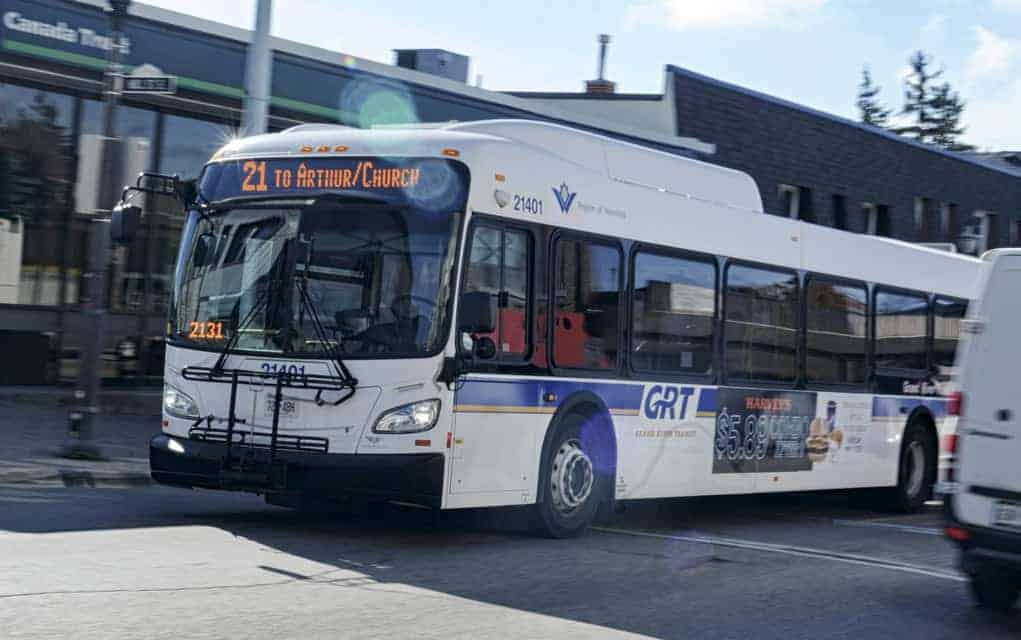More reductions in service are coming this month to public transit, as Waterloo Region deals with the impact of the COVID-19 crisis.
Grand River Transit last month eliminated fares on its buses, later in April reducing service levels to reflect both a lower ridership and the loss of revenues from its fare boxes.
The closure of schools and non-essential businesses, along with stay-at-home directives, lead to large declines in the number of users. Peter Zinck, the region’s director of transit services, says revenues are down by $7 million, a trend that’s expected to continue as the waiving of fees continues until May 31.
“We’re not collecting fares and ridership is down, so there was capacity to reduce our service levels to offset lost revenues,” said Zinck of further reductions slated for mid-May.
While there is no income right now because of the free fares, Zinck says the number of daily riders sits at about 28,000 people. This is 30 per cent of the normal daily ridership, but it’s to be expected since most people are at home or travelling only for essential trips.
Since there are still so many people travelling daily using GRT, Zinck says social distancing measures are being taken seriously and changes have been made to ensure the safety of everyone involved in the process.
“With that [many] riders dropping and the capacity of vehicles still not changing, there’s a fair amount of space on a vehicle. We do have some busy trips that we’re tracking on a regular basis, and where those busy trips are, we try to slot in another vehicle to run with it to reduce the social distancing,” he explained
When a bus gets to a capacity of 15 people, drivers are to advise dispatchers of the number of riders. Once they get to 20, drivers are allowed to bypass potential riders for safety, though that “does not happen very much,” said Zinck.
In addition to maintaining the right number of people for social distancing, other safety measures include additional cleaning of what Zinck calls touch points on a vehicle, doing an antimicrobial spray treatment of vehicles that can inhibit the growth of viruses, and adding a barrier between the operator and the rest of the vehicle.
At this point, how much longer the changes to the transit system will remain in place is still up in the air, though Zinck notes that once businesses and the economy start to open, things may start going back to normal.
For now, more changes are coming in mid-May, which will include a decrease in service and frequency.
There are many services that will stop at midnight and some bus routes which operate every 30 minutes will likely become hourly, he said.
For riders that take the route 21 bus to Elmira, Zinck says there will not be any changes upcoming at this time. Hours will remain the same for the line, which has seen a more consistent ridership throughout the pandemic, at about 40 per cent of the normal daily average.
Zinck notes that while transit is free, residents should be using it only for essential trips.
“By all means if you’re going to work and it’s essential that you be there and or looking to do your shopping, please use transit. But if you’re not needing to be there and you’re just going for a ride, that’s not a good place to be.”









